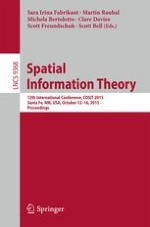
2015 | OriginalPaper | Chapter
Outline of a Formal Theory of Processes and Events, and Why GIScience Needs One
Author : Antony Galton
Published in: Spatial Information Theory
Publisher: Springer International Publishing
Activate our intelligent search to find suitable subject content or patents.
Select sections of text to find matching patents with Artificial Intelligence. powered by
Select sections of text to find additional relevant content using AI-assisted search. powered by